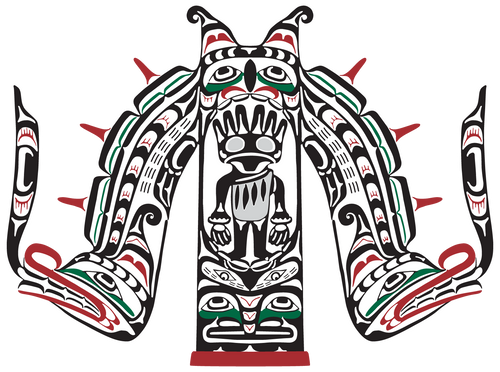Art Card - Heritage (Whale Glacier)
Overlooking the Comox Valley, sits the majestic Comox Glacier. For residents of the Valley, the glacier is a symbol of our community and one of the physical features that make our area so beautiful. Recent reports have made it evident that the glacier is disappearing at an alarming rate and will likely be gone within my lifetime. The glacier is an important part of our community’s heritage.
For members of the Comox First Nation, the glacier has even more significance. According to stories passed down for countless generations, the glacier’s origins are intimately tied to our history.
Many thousands of years ago, an old chief was forewarned of the coming of a great flood. He was told by the Creator to prepare four canoes and great lengths of rope. He proceeded to pick the strongest and most attractive members of the community. When the flood came the selected people went into the canoes. Whenever non-selected individuals tried to enter a canoe, the craft would magically move away from them. The flood destroyed the village and the rest of its inhabitants.
The people in the canoes floated around for a while with no evidence of land in sight. Eventually, they spotted a large white whale. They attached their ropes to the whale. By the time the water receded, the whale landed on the sight of the glacier, keeping the Comox people in our territory. To this day we respect our Heritage and refer to the glacier as “Queneesh,” or white whale.
-Andy Everson
8 3/4" x 6 1/4" Card
12" x 9" Matted Card



